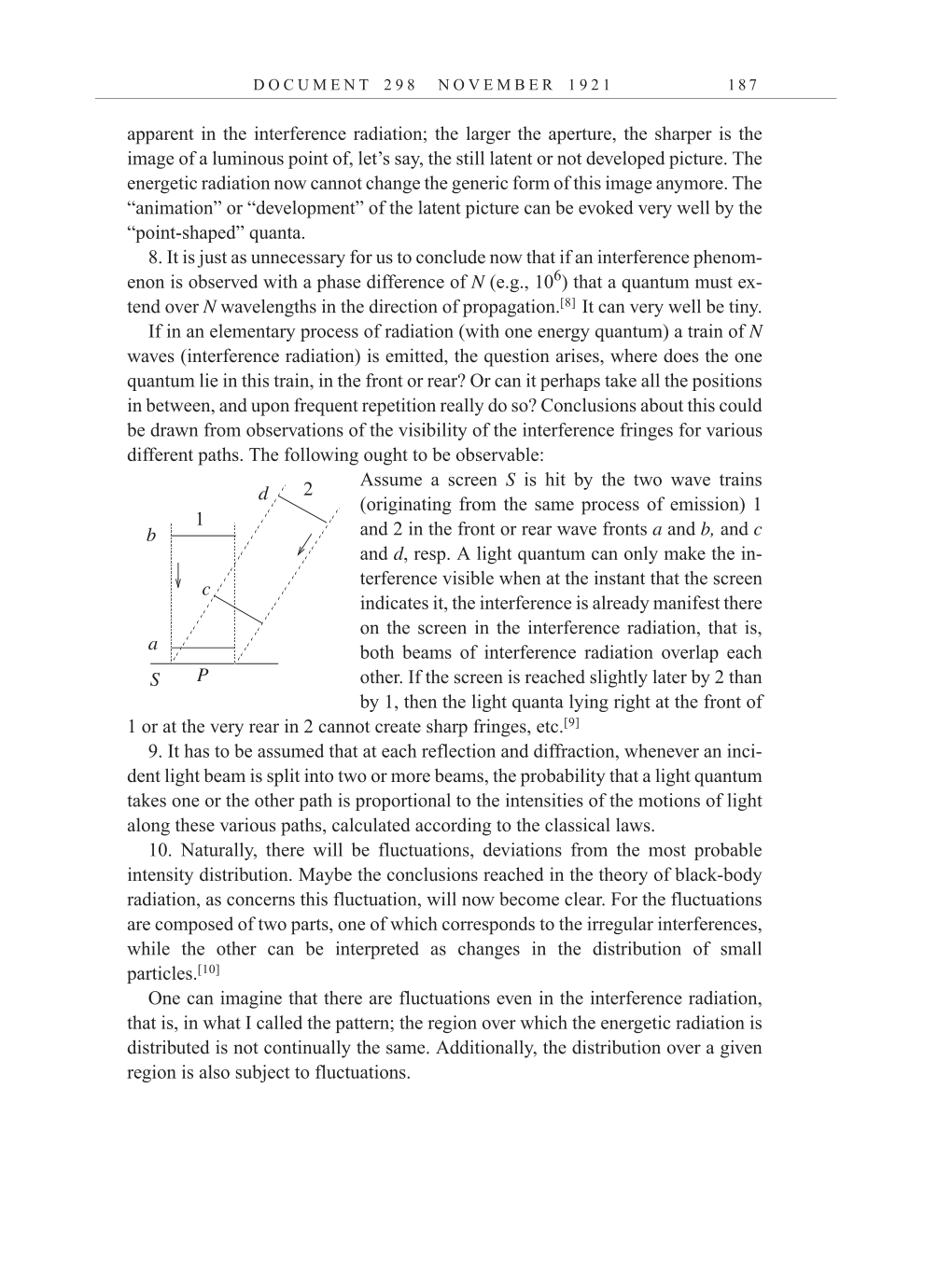D O C U M E N T 2 9 8 N O V E M B E R 1 9 2 1 1 8 7
apparent in the interference radiation; the larger the aperture, the sharper is the
image of a luminous point of, let’s say, the still latent or not developed picture. The
energetic radiation now cannot change the generic form of this image anymore. The
“animation” or “development” of the latent picture can be evoked very well by the
“point-shaped” quanta.
8. It is just as unnecessary for us to conclude now that if an interference phenom-
enon is observed with a phase difference of N (e.g.,
106)
that a quantum must ex-
tend over N wavelengths in the direction of
propagation.[8]
It can very well be tiny.
If in an elementary process of radiation (with one energy quantum) a train of N
waves (interference radiation) is emitted, the question arises, where does the one
quantum lie in this train, in the front or rear? Or can it perhaps take all the positions
in between, and upon frequent repetition really do so? Conclusions about this could
be drawn from observations of the visibility of the interference fringes for various
different paths. The following ought to be observable:
Assume a screen S is hit by the two wave trains
(originating from the same process of emission) 1
and 2 in the front or rear wave fronts a and b, and c
and d, resp. A light quantum can only make the in-
terference visible when at the instant that the screen
indicates it, the interference is already manifest there
on the screen in the interference radiation, that is,
both beams of interference radiation overlap each
other. If the screen is reached slightly later by 2 than
by 1, then the light quanta lying right at the front of
1 or at the very rear in 2 cannot create sharp fringes,
etc.[9]
9. It has to be assumed that at each reflection and diffraction, whenever an inci-
dent light beam is split into two or more beams, the probability that a light quantum
takes one or the other path is proportional to the intensities of the motions of light
along these various paths, calculated according to the classical laws.
10. Naturally, there will be fluctuations, deviations from the most probable
intensity distribution. Maybe the conclusions reached in the theory of black-body
radiation, as concerns this fluctuation, will now become clear. For the fluctuations
are composed of two parts, one of which corresponds to the irregular interferences,
while the other can be interpreted as changes in the distribution of small
particles.[10]
One can imagine that there are fluctuations even in the interference radiation,
that is, in what I called the pattern; the region over which the energetic radiation is
distributed is not continually the same. Additionally, the distribution over a given
region is also subject to fluctuations.
a
b
1
2
c
d
S
P
